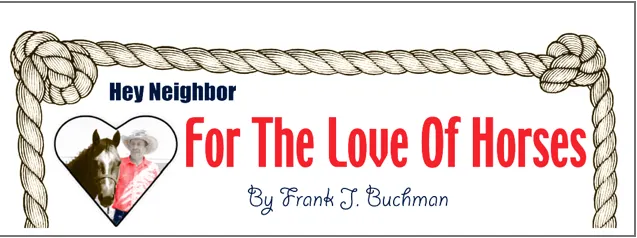By Frank J. Buchman
Commodity price drops from the highest ever have now put many agriculture producers in a “negative cash flow” operation.
“This is going to require these farm businesses to make adjustments,” insisted Chad Gent, vice president of retail credit for Frontier Farm Credit.
Speaking to nearly 200 agriculture producers gathered at Madison, for the Farm Profit Conference, hosted by 580 WIBW in cooperation with the Greenwood County Extension Service, Gent said, “Restructuring a farm balance sheet is not an indication of failure, but a sign of a good financial manager.”
Without making operation adjustments, some producers could soon be forced out of the business, which has the most optimistic future, because “everybody has to eat,” and farmers are the ones who grow the food.
First on farmer’s minds is the “corn drop,” which Gent’s charts showed that corn futures have dropped 55 percent since August 2012. Soybean meal has declined 50 percent from the same date high.
While Flint Hills cattlemen sometimes aren’t as observant to competitive live meat animal markets, the hog farmer has been affected even more negatively with lean hog futures now down 58 percent from a July 2014 top.
Milk futures are down 41 percent from a September 2014 high, while feeder cattle futures are off 40 percent from an October 2014 peak, when live cattle futures also peaked, but are now 31 percent lower.
However at the same time crude oil futures have dropped 77 percent from an April 2011 peak. That has sharply reduced agriculture fuel inputs, although the ranchers-farmers with oil wells in their pastures-fields certainly could have mixed emotions.
Daily, old timers in agriculture reflect dilemmas faced in the 1980s, when many producers were forced out of business, or at least made to liquidate portions of operations that had been in family for decades.
“This is not the 1980s all over again,” Gent stated emphatically.
In 1979, 70 percent of the farm debt was held by 30 percent of the farming operations, which produced 42 percent of the net income, according to charts Gent displayed.
“In 2012, 68 percent of the farm debt was held by 4 percent of the operations, which produced 48 percent of net farm income,” Gent said.
In 1979, only 32 percent of farming operations had no debt, but in 2012, three-fourths of the farmers had no debt, Gent stated.
The most painful stinger of all for the ’80s: “historically high interest rates.” Prime rate in 1981 was 21 percent, and the Federal Funds rate in 1981, was “as high as 19 percent.”
Gent emphasized: “Interest rates now are historically low.” The prime rate is 3.5 percent, while Federal Funds rate is O.5 percent.
In 1983, total farm interest expense was 150 percent of net farm income, while in 2012, farm interest was about 14 percent of net income.
Three decades ago, most agriculture operators had loans with variable interest rates. “There is more use of fixed interest rates today.” Gent said. “Many borrowers having already locked in record-low rates.”
Production agriculture is a competitive environment, Gent verified.
Four factors determine business success. “Marketing and production are the key components of margin management, while focusing on solvency and liquidity give farmers the opportunity to withstand industry cycles and take advantage of opportunities,” Gent said.
Showing Iowa numbers, Gent said corn growers had three consecutive years with profit margins averaging more than $2 a bushel, or $350 net returns per acre.
“Current forecast predicts three years of little help for corn farmers on the price side, so producers must focus on the cost of production to be competitive and profitable,” Gent contended.
“Focus on the big items,” he advised.
Cash rent and payments account for 27 percent of corn production costs, according to a 2016 Purdue University estimate.
Machinery and family living are 19 percent of costs, fertilizer is 18 percent, and seed is 15 percent, while fuels today are only 6 percent of costs, and interest rates are 1 percent.
“Farmers must analyze the variable cost of production to optimize gross margin, farm expenses versus income,” Gent said. “Know your costs, and lock in a profit.”
Family living expenses are higher than most farmers realize, or will admit. “Track it down, and know what you spend,” Gent demanded.
Fixed asset costs with lenders and landlords should be adjusted, Gent said.
“A lender can often refinance loans to lock in longer term rates, and re-amortization of loans can extend loan maturity,” Gent said.
“Restore liquidity with reasonable levels of long term debt, or sale of low return assets,” Gent recommended.
Detailed examples revealed how a Kansas grain farmer made debt structure adjustments, which fully restored working capital, while payments were sharply reduced.
Cattle have been a volatile business, as fed cattle prices have gone from netting big gains to big losses, Gent’s chart showed. “Feeder cattle prices have also had a significant drop, but it is still a profitable business,” he said.
However, Gent warned there are “more calves on the way,” as the nation’s calf crop came up in 2015, and is expected to continue to keep mount to 31.5 million head in 2018, equal to 2010.
An example of debt structure adjustments for a Kansas stocker cattle operation resulted in “fully restored working capital, with payments reduced by $13 an acre.”
In summary, Gent said, “Low cost agriculture producers with sustainable debt level will survive and thrive in the future. Maintain a strong financial position with maximum risk bearing capacity.
“Be prepared to make adjustments,” Gent emphasized. “Not every problem can be fixed with a new loan, but non-farm income, and low return asset sales are options essential for continuing in the farming business.
“There will always be opportunities in agriculture,” Gent concluded.



